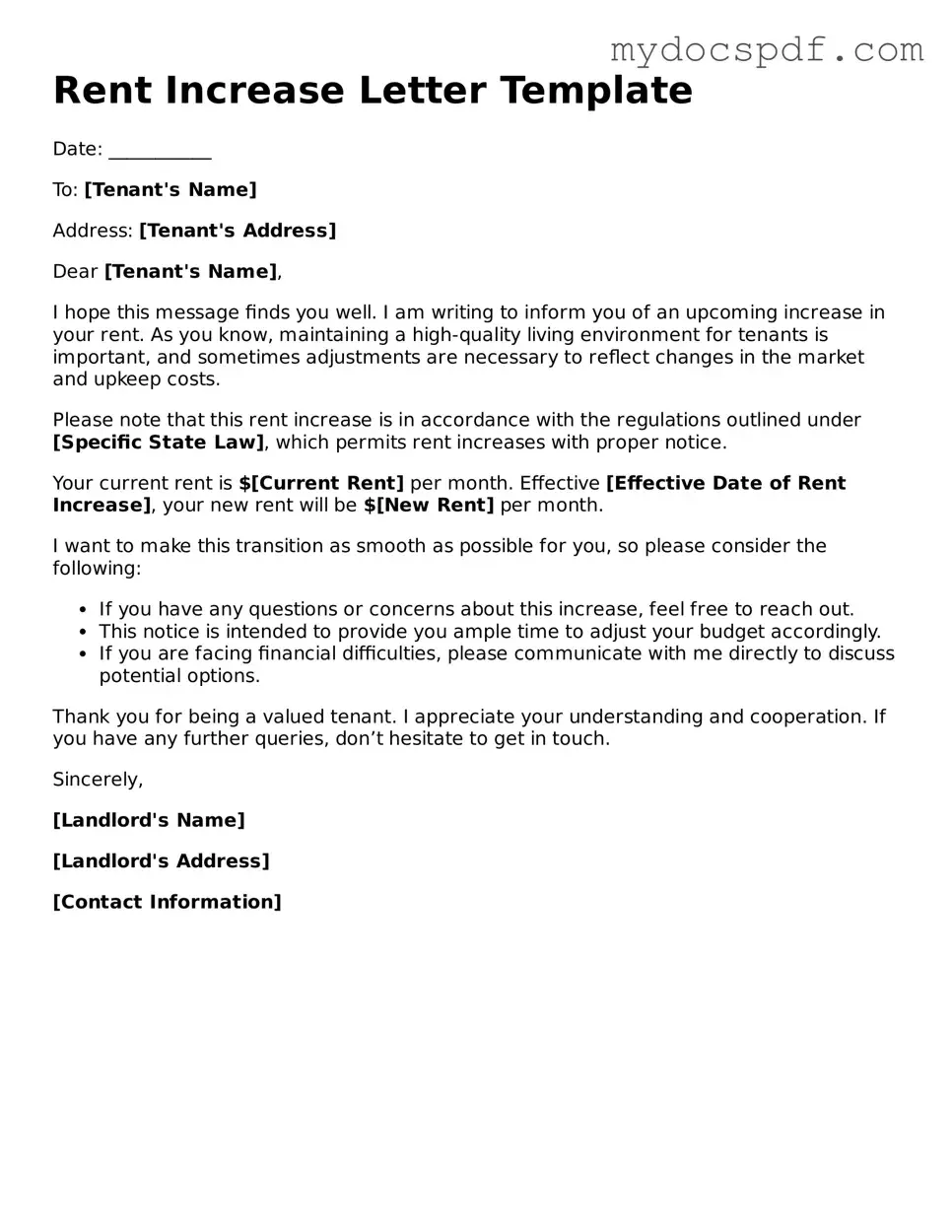Rent Increase Letter Template
Date: ___________
To: [Tenant's Name]
Address: [Tenant's Address]
Dear [Tenant's Name],
I hope this message finds you well. I am writing to inform you of an upcoming increase in your rent. As you know, maintaining a high-quality living environment for tenants is important, and sometimes adjustments are necessary to reflect changes in the market and upkeep costs.
Please note that this rent increase is in accordance with the regulations outlined under [Specific State Law], which permits rent increases with proper notice.
Your current rent is $[Current Rent] per month. Effective [Effective Date of Rent Increase], your new rent will be $[New Rent] per month.
I want to make this transition as smooth as possible for you, so please consider the following:
- If you have any questions or concerns about this increase, feel free to reach out.
- This notice is intended to provide you ample time to adjust your budget accordingly.
- If you are facing financial difficulties, please communicate with me directly to discuss potential options.
Thank you for being a valued tenant. I appreciate your understanding and cooperation. If you have any further queries, don’t hesitate to get in touch.
Sincerely,
[Landlord's Name]
[Landlord's Address]
[Contact Information]
